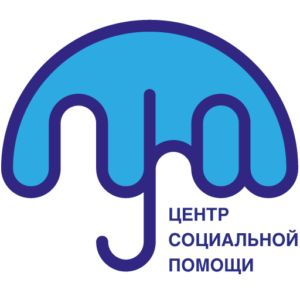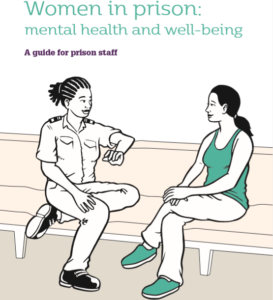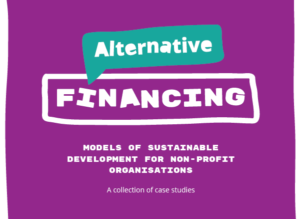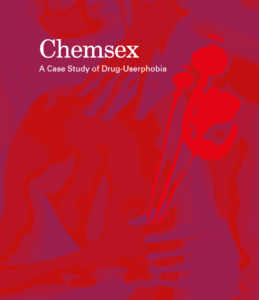Mass media play a major role in fighting for human rights, especially when it comes to population groups vulnerable to HIV. Through the wide media coverage of successful human rights defence cases implemented by community and civil society, the government can see that the community of People Living with HIV (PLHIV) and people vulnerable to HIV can and should be an equal partner and an ally in fighting HIV/AIDS epidemic.
This helps with forming a positive image of PLHIV and representatives of other key populations in the society, decreases stigma and discrimination, raises their self-esteem and self-significance and gives motivation for further activities and professional growth.
Thanks to the coverage of successful practices in mass media, a large number of PLHIV, people who use drugs (PWUD) and representatives of other vulnerable groups gain opportunity to get basic human rights knowledge, action plans and tools, which allow them to solve problems related to violation of human rights due to HIV in their own regions independently.
 Liudmila Vins, project manager of LUNa Social Support Centre, legal adviser of Interregional Center for Human Rights in Yekaterinburg, has applied to the Emergency Support Fund for key populations in EECA for a grant. The goal of her project is to change the legal environment and public opinion towards people living with HIV and representatives of groups vulnerable to HIV through mass media.
Liudmila Vins, project manager of LUNa Social Support Centre, legal adviser of Interregional Center for Human Rights in Yekaterinburg, has applied to the Emergency Support Fund for key populations in EECA for a grant. The goal of her project is to change the legal environment and public opinion towards people living with HIV and representatives of groups vulnerable to HIV through mass media.
Liudmila, what is the core of your project?
Our way of working is as follows – our lawyer together with partners, street lawyers from the regions, collects successful legal practices and strategically important cases, prepares the gathered materials for media publications, provides a legal evaluation and an algorithm for solving the problem. An info manger writes articles based on the cases for mass media and our own media resources, passes information about these cases to journalists through mailing lists, social media, and connects media and people featured in the cases in order to prepare further materials.
Could you tell us about the intermediate project results?
Yes, the project has substantially helped us to develop the informational part of our work and also gave a start to a new project of educating Russian NGOs on working with media. We found 17 cases, which resulted in 33 publications. Each case contained a story of at least one person – the leading story character, and at least 2 more people connected to the story, close relatives of the leading character. In total 51 people were featured in the stories.
Please share the most interesting and remarkable moments of the project.
The most remarkable example of support within this project is Olga’s story (the name is changed). We published it on our website.
Local journalists quickly noticed this material; they immediately reacted and published a number of articles about the fact that a woman in detention facility doesn’t receive treatment for HIV-infection. The news travelled fast: one journalist made a lot of requests to government agencies and received a positive decision from government officials. The result was that this woman received medication the same day.
You started your social support activities for vulnerable groups in 2009. How have the statistics changed since then?
At that time harm reduction programs were developing actively. However, the issue of defending the rights of PWUD was still unresolved, so starting from 2012 I began to develop street lawyers programming in Yekaterinburg. The need for this kind of support is very high now. In 2012 legal assistance was given to 100 people per year, and there was one street lawyer. Currently we work with 5 street lawyers, and we give this kind of support to people on a regular basis.
Who are the street lawyers?
These are people from the key populations community who are taught the basics of human rights defense. So, they can provide basic support with human rights defense, and then, if necessary, pass on cases to professional lawyers.
What is the attitude of the key populations’ representatives towards your activities?
We have a good connection with our target group, they are happy to receive our support. However, there are certain difficulties. For example, a person can disappear for a period of time while being under our supervision. Then (s) he appears again in a month, and we have to start from the beginning.
Why do you think it is so important to involve representative of key populations in such work?
Almost all of our staff members except for two are people from the key populations/PWUD community. I have been in remission for a long time myself. I think that a different approach is simply not effective. Nobody can truly understand PWUD as well as a person who has gone through it too, and most importantly, who was able to overcome it and solve a problematic situation successfully.
When people are doing something for the society, they often have an ideal example of such society in mind. Do you have one?
I don’t have examples of an ideal situation in any country. There are drawbacks everywhere. When it comes to talking about the approach to working with PWUD in Russia, I reply that there’s simple no such work. Those few NGOs that provide harm reduction programs, can’t reach all the PWUD to the full extent. For me the ideal situation is when the system of social support is developed in the country, there are harm reduction programs, access to quality treatment, and there is no stigma and discrimination within the society.
The project is supported by the Elton John AIDS Foundation and Aidsfonds.




